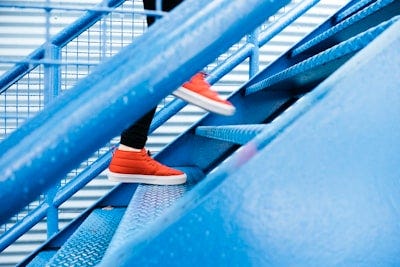Take the Stairs
Take the stairs for longer life, a too-tight sports bra can interfere with your breathing and your weekly recommendations.
The Rundown
Take the Stairs. In an abstract presented on April 26 at ESC Preventative Cardiology 2024, a scientific congress of the European Society of Cardiology, a team from the University of East Anglia and Norfolk and Norwich University Hospital Foundation Trust investigated whether climbing stairs could play a role in reducing the risks of cardiovascular disease and premature death.
The systematic review came down to a final meta-analysis of nine studies with over 480,000 participants who were healthy or had a previous history of heart attack or peripheral arterial disease. Their ages ranged from 35 to 84 years old and 53% were women. Studies were included regardless of the number of flights of stairs and speed of climbing.
Stair climbing was associated with a 24% reduced risk of dying from any cause and a 39% lower likelihood of dying from cardiovascular disease compared with not climbing stairs.
Study author Dr. Sophie Paddock sums up the results with easy to follow advice, “Short bouts of stair climbing should be an achievable target to integrate into daily routines…so whether at work, home or elsewhere, take the stairs.”
Sports Bras and Restricted Breathing. A common complaint about sports bras is that the tight bands across the rib cage are uncomfortable. But do they also restrict breathing? Shalaya Kipp, a former Olympic steeplechase runner and an exercise scientist at the University of British Columbia (Kipp recently moved to a new position at the Mayo Clinic), decided to find out.
For the study, Kipp and her team had a small group of nine nationally or internationally competitive runners perform a series of treadmill tests while wearing a modified version of Lululemon’s Energy sports bra. (The tightness around the ribcage could be increased or decreased with extra attachments at the back).
The bra also had a modification that allowed a small balloon catheter to be inserted into the band to measure the pressure from the participants’ inhalations and exhalations. But that wasn’t the last of the catheters.
The very dedicated runners also had a balloon catheter inserted through their nose and down their esophagus to measure the internal pressures exerted by their lungs with each breath. The catheter let the researchers calculate the energy used by the respiratory muscles to inflate and deflate the lungs.
The tests were done under three conditions: with the runners selecting their preferred bra size, with the bra tightened and with it loosened.
Between the tight and the loose bra, the team found a difference of one to two percent in most runners.
Kipp estimates that a two percent change in oxygen consumption translates to a three-minute change in marathon time for a three-hour runner.
The theory is that the tight bra made the women breathe quicker but more shallow so the work of breathing took more energy.
The takeaway? If you’re happy with the tightness of your bra, stick with it. But if you ever thought it might be hindering your breathing, there’s a good chance it is.
Extra Point
Watch
Borje—The Journey of a Legend. In the spirit of playoff hockey season, this six-part Swedish/English drama series is inspired by the true story of Borje Salming, who was a six-time all-star for the Toronto Maple Leafs during hockey’s aggressive 1970s era. Salming broke numerous records and was the first European player inducted into the Hockey Hall of Fame. The first two episodes of Borje premiere May 2 on Viaplay.
Listen
Mind Over Macros. In this podcast, host Mike Millner discusses ways to improve your health, your relationship with yourself and how to accomplish your fitness goals by focusing on mindset.
Read
Your Guide to Using Electrolytes Properly by Sara Angle for Outside magazine. Electrolytes are all the rage, but do you really need them?



